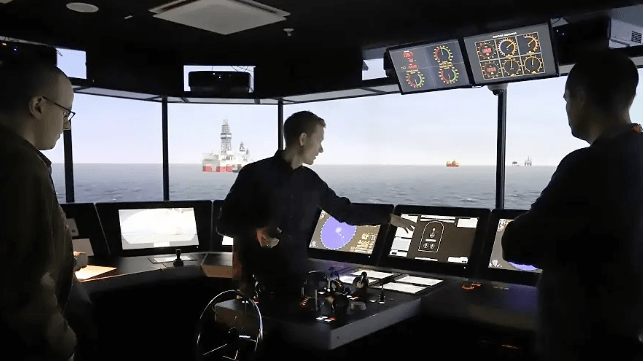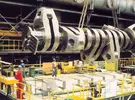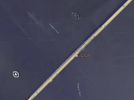concepthomes2
When do we start?
2A Bourbon Hound OG
Charter Life Member
Benefactor
Multi-Factor Enabled
Which sublevel of 4D chess was this?
None of you conspiracy theorists noticed they deployed (and dragged) an anchor before they hit huh?
“Star-Spangled Banner” songwriter Francis Scott Key opposed abolitionists and free speech in his role as district attorney of the city of Washington. Francis Scott Key, songwriter of “The Star-Spangled Banner,” defended slavery and attacked the abolitionist movement.Was Francis Scott Key racist? Why did they take down his bridge?
I can't even imagine the power draw an electric cargo ship would create to turn motors strong enough to push a metric sh!t-ton of cargo across the ocean. It would need its own nuclear reactor to create the electricity. Or there'd be no room for conex boxes as it would all be batteries.
Yeah because we want folks who can't even maintain a Volvo Penta diesel running a nuclear reactor lolI can't even imagine the power draw an electric cargo ship would create to turn motors strong enough to push a metric sh!t-ton of cargo across the ocean. It would need its own nuclear reactor to create the electricity. Or there'd be no room for conex boxes as it would all be batteries.


One video I saw pointed that out. Saying you can see the smoke color change as whatever was failing.Still lots of smoke coming out of that exhaust pipe.
I can't even imagine the power draw an electric cargo ship would create to turn motors strong enough to push a metric sh!t-ton of cargo across the ocean. It would need its own nuclear reactor to create the electricity. Or there'd be no room for conex boxes as it would all be batteries.
How in the world do those stacked containers stay onboard during transit. Looks sketchy to me.
How in the world do those stacked containers stay onboard during transit. Looks sketchy to me.
While truss design is "old" (maybe a few hundred years, if that) compared to newer designs like cable suspension and/or stayed, they're certainly not inferior. Cable systems have their weak points, too. Cut a few critical lines or the main cable and see what happens.Trusses are older technology and just bad for stuff like this.
Duuuuude...*if* wind could even get a ship of that size going, it would take for-ev-er to get across the ocean with wind!If only there was a way to harness the wind to get across the ocean.
Moving what? 6/7 knots in a harbor, maybe?Dali was 117000 tons loaded. For scale, that's 6 fully loaded freight trains smashing into a single pier.
* according to teh googals
You could, but you wouldn't have a lot of room for ships. Or water.Moving what? 6/7 knots in a harbor, maybe?
I don't think you could build a pylon or bumper that could stop that.



I didn't see one anywhere near as big as Dali, but sailing in the Mediterranean I got to watch one up close take a little bit to change course to give us on our little sailboat ROW while we were running about 13 knots with decent winds. I couldn't get a gauge on how fast they were moving, but just course correction took a significant amount of time.While it is possible and there are a boat load of terrorists who’d love to crash ships into US bridges I believe it would be easier to fly a plane into one. When you think of the logistics to gain control of a ship (getting someone in a position of authority) and then the actual physics behind steering one into action is way hard than just point and crash. These things are up to 150,000 to 200,000 ton behemoths that are made for open sea cruising not making quick turns, accelerating or stopping on a dime. Their engine (a 2,000+ plus diesel) does create a huge amount of power but it does not spool up in seconds … it’s camshaft is HUGE …
View attachment 760756
… and it takes time to spool up along with all the 3 foot or so pistons in the engine to it is 100-150 rpm operating speed. The rudder also is a huge piece that does not swing fast either … it takes time also. The person at the wheel also does not just step on the gas and turn the wheel on the ship instantly … it is not a speed boat.
The Dali did show a huge blast of smoke from what is likely a huge turbocharged 2 stroke diesel engine being rev’ed up as fast as possible but still it has to spin the up to 30 foot diameter 100 ton propeller … it ain’t instant (especially if asked to go in reverse in an emergency). Moves like this likely cause some cavitation (the water around the propeller and rudder in the case of ships like the Dali become almost aerated and cuts the force the rudder and propeller can apply) and loss of control. Also the Dali has several diesel generators that provide power for nab and control systems along with power for auxiliary systems for the ship and some cargo containers (refrigeration type units and such) that also could have rev’ed up after being offline … speculation there at best. All the above happened in a span of a couple minutes which is actually a very short period for a 1,000 foot 150,000+ ton ship.

Duuuuude...*if* wind could even get a ship of that size going, it would take for-ev-er to get across the ocean with wind!
I'll try my hand at shipbuilding knowledge (based on a 5 minute Wikipedia degree!):
One of the largest wind-powered ships of the 1800's was the "super heavy frigate" such as the HMS Leander. It was 1,572 TN displacement (no idea how to get to an actual weight, fully loaded from that data) and had an estimated max speed of 13 kts using wind sails under load. The MV Dali (the ship that hit the bridge) is approximately 52,000 TN displacement and has a max speed of 22 kts using its screw under load of what is likely lightyears heavier than the old frigate.
...and now I've worked myself into a mental hole and have no idea where I was going with this...
Let's suffice it to say blowing a modern cargo ship across the ocean would be like one of those "strongman competition" guys pulling your rig down the highway with their teeth. Can it be done? Sure, but the cargo will be expired by the time it makes it to the loading dock!
Is anyone else amazed that the bridge was obliterated but the ship looks mostly fine?
While truss design is "old" (maybe a few hundred years, if that) compared to newer designs like cable suspension and/or stayed, they're certainly not inferior. Cable systems have their weak points, too. Cut a few critical lines or the main cable and see what happens.
Trusses and cables are the only way to span a large distance. Laws of physics catch up to a beam/girder design really quickly as they get longer and longer. A beam would be dozens or feet tall to support a free span like the Key bridge did. That gets so cumbersome in terms of size and weight to transport, build, and support, that the design kills itself. Trusses and cable designs allow for lightweight "airy" designs that span really long distances while holding disproportionate amounts of weight (i.e. traffic).
The Key bridge's failure was the loss of a pier which would have collapsed any type of bridge: cable suspension or stayed, girder, or truss. It's like if you're squatting 400 and I come kick your knee out--you're coming down whether you're a weekend warrior type in the gym or a world-class champion.
But with truss spans, if you kick one guy’s knee out, he falls down and the guy next to him, and the guy next to him and the guy next to him.While truss design is "old" (maybe a few hundred years, if that) compared to newer designs like cable suspension and/or stayed, they're certainly not inferior. Cable systems have their weak points, too. Cut a few critical lines or the main cable and see what happens.
Trusses and cables are the only way to span a large distance. Laws of physics catch up to a beam/girder design really quickly as they get longer and longer. A beam would be dozens or feet tall to support a free span like the Key bridge did. That gets so cumbersome in terms of size and weight to transport, build, and support, that the design kills itself. Trusses and cable designs allow for lightweight "airy" designs that span really long distances while holding disproportionate amounts of weight (i.e. traffic).
The Key bridge's failure was the loss of a pier which would have collapsed any type of bridge: cable suspension or stayed, girder, or truss. It's like if you're squatting 400 and I come kick your knee out--you're coming down whether you're a weekend warrior type in the gym or a world-class champion.
One of the largest wind-powered ships of the 1800's was the "super heavy frigate" such as the HMS Leander. It was 1,572 TN displacement (no idea how to get to an actual weight, fully loaded from that data) and had an estimated max speed of 13 kts using wind sails under load. The MV Dali (the ship that hit the bridge) is approximately 52,000 TN displacement and has a max speed of 22 kts using its screw under load of what is likely lightyears heavier than the old frigate.
O.It was a joke. On my end at least.
Doesn't matter what type of bridge span system is in use--knock out a pier and the bridge is coming down. Zero chance of any type of bridge surviving the fall as they're just not designed for the slew of forces that pull and push on the bridge when it become distorted. It was designed and built for one standing position with loads in known locations. Once the bridge is distorted and loaded differently than designed, it's toast.But with truss spans, if you kick one guy’s knee out, he falls down and the guy next to him, and the guy next to him and the guy next to him.
Hazmat can get around on 695 the other side of Baltimore. Just can't go through the tunnels. 695 is a loop. Only a small portion if it is out. That bridge "only" carried something like 12,000 vehicles a day. Not insignificant but not a huge number compared to the rest of the traffic there. It's getting the freight out of the port right now that's a problem. Other incoming cargo has been diverted to Virginia and NY. I'm sure some will go to Charleston and Savannah as well.I wonder if they can use barges to ferry the hazmat vehicles over the water after the structures are dismantled and the water clear.
Amazingly, it is not a diesel electric ship, like a locomotive... instead the fixed pitch propeller on it's single shaft is coupled to the diesel main engine. That's pretty low tech propulsion for a ship built in 2015.if this was an electric ship, this wouldn't have happened

